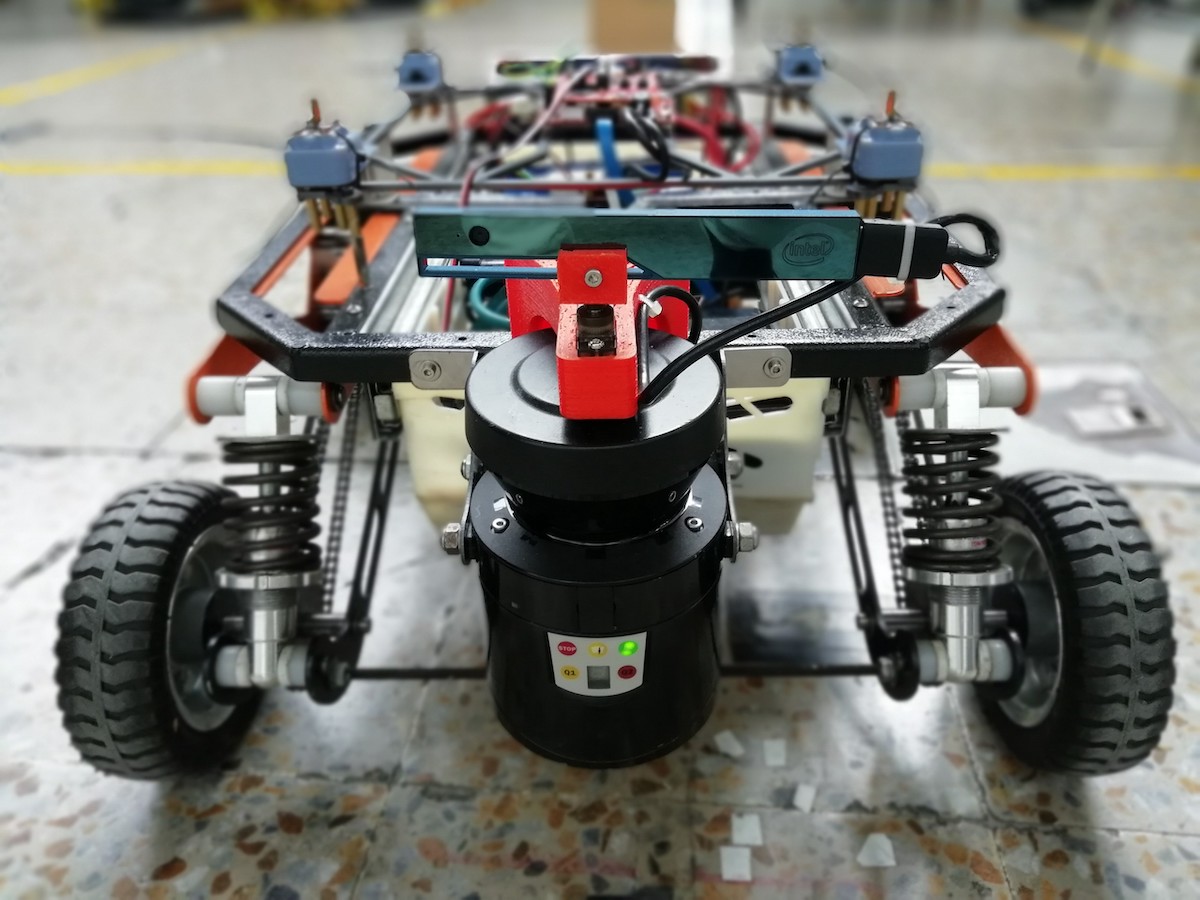Autonomous Guided Vehicle
I was part of this project when I was a member of the Experimental Factory Research group back at the National University of Colombia.

This project is special for me, it was the first time that my job included playing around and disassembling a small vehicle, it was also the first time I had to work with ROS, it was a perfect way to introduce me to ROS and since then I been in love with it and I am very grateful for it . This Autonomous Guided Vehicle (AGV, the picture above) was used to do research regarding autonomous warehouse technologies. There were several of these vehicles in the lab, they were equipped with Lidar, Radar, Sonar and Stereo cameras, they were also equipped with pressure sensors at the top to measure the weights of the objects which they are carrying (when the shell is on. In all the picture I show here, the AGV is opened up). Their main purpose is to transport equipment or items between bigger robots or between humans and robots. So one of the main capability it has to have is to communicate to other robots, which incorporates direct communication through a standardised protocol, as well as indirect communication such as physical behaviour of the agent to allow easy physical interaction, those were the task in which I was working on.
Communicating with other robots
Keep in mind that it was a research group, so the interactions were just enough to experiment with a feature with some robot. Examples of which robots it has to communicate with are mainly mechanical arms which moved pieces around between the theoretical warehouse. In order to communicate and carry on its tasks, they had to have a way to publish need tasks that needed to be done, a way to negotiate between the AGVs to decided who will do what. During negotiation critical information as battery, capacity, etc. is taking into account for the optimisation. Designing that protocol and experimenting with the robots negotiation and executing tasks was one of my tasks there.
Cameras
In order to have good communication between robots, apart from direct dialogue through a protocol, robots needed to behave in a way that was in the range of the motor skills of the other robots, so they both can interact physically. For example, the right alignment in which the mechanical arm can grab the items. Using cameras both robots have to recognize each other and make sure the task can be carried on by the other partner in the task. That was my second task in the group, sadly we didn’t have much time to deeply work with it.
Videos
These videos are not related to the tasks I mentioned above, they where mainly showing the autonomous navigation capabilities of the robots, but they are the only videos I have regarding the AGVs sadly. Anyway, enjoy these very short and noisy videos.
A video of the path planning and sensing capabilities of the AGV.
And a video of the physical robot in action
* Images and videos taken by me and my other partner.